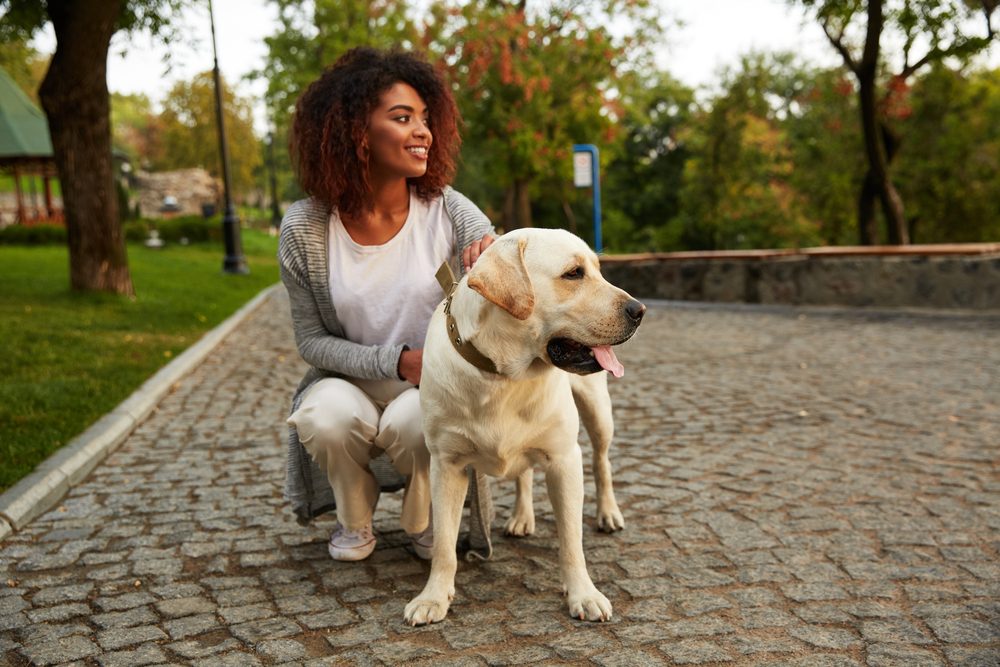Zoom Room Offers Dog Park Tips
From Reader’s Digest, July 22, 2021, by Karen Asp
There’s no better place than a dog park for exercise and socialization. Follow these guidelines to make sure the experience stays fun.

Know the fees and requirements before you go
Most dog parks require dogs to be licensed (with tags and a collar) and fully vaccinated, says Tabytha McConnell, general manager and trainer at Zoom Room in Redondo Beach, California. Depending on where you live, expect to pay anywhere from $10 to $20 a year for the license, although it can be more if your dog isn’t spayed or neutered.
Know your dog’s personality
While they can be a lot of fun, dog parks can also pose challenges, and you need to make sure your dog is capable of handling them. The best way to do check is to watch how well your dog does in new situations. This is especially key if you’ve recently adopted an adult dog. McConnell suggests having your dog interact with other pooches, either on walks or playdates. If your pup shows any reactivity like barking, teeth-baring, or growing, he’s not ready for the park. Also, if your dog gets overexcited, this could cause another dog to react, which could lead to a fight. If you have a shy dog, you don’t want to make them more fearful or stressed by bringing them to the park.
Know the rules of the park
Every park has different rules so read them before you go. Some, for instance, may not allow you to bring your dog’s toys or treats, as it could cause issues with other dogs, McConnell says.
Bring water
Pack water and a bowl so that your dog has access to clean water. Along with keeping your pup hydrated, you’ll be giving your dog a chance to touch base with you. It encourages your dog to take breaks and check in with you during their playtime. Also, the water facilities in parks are an excellent way for dogs to pass around illnesses like kennel cough, adds McConnell.
Keep your first visit short and sweet
You want your dog to have positive associations with the dog park, which is why it’s best to keep that first visit short. Go at a time when the park is quieter and let your dog get used to the setting. If there are other dogs around and your pup is interested, let them causally interact, McConnell says.
Don’t wait to remove an uncomfortable pooch
Always pay attention to how your dog is behaving, who your dog is playing with and where your dog is. If your dog seems uncomfortable or overexcited, or she is getting chased by another dog or is simply not enjoying the park, leave so that nothing bad happens, McConnell says. Do the same if your dog is being aggressive or getting too wound up.
Respond to your dog’s body language
To help identify if your dog is enjoying the experience, focus on their body language, namely posture. Look for a relaxed body language like a loosely wagging tail, no physical tension and maybe even a play bow. Signs that indicate a scared or uncomfortable dog include a low or tucked tail, raised hair, hunched back, crouching close to the ground, and ears pinned back. Fearful dogs might also pull back their lips and show teeth with a snarl or hide behind somebody they trust. If you see these behaviors in your dog or others, take a break from the park and try again another time or consult a certified professional dog trainer for guidance.
Avoid the 3 Ps: packing, possession, provoking
When gauging if your dog is doing OK at the park, three variables can come into play: The first is “packing,” which is when multiple dogs are together. “While we want our dogs to play, we want to make sure they’re not packing, as it can be intimidating to other dogs that aren’t part of the pack,” McConnell says. Dogs can also become very excited in a pack, and that could lead to fights. If packing is happening, lead your dog away to a more neutral area. Possession is the next one: If your dog is possessive or protective of you or of a stick, then any dog or person who approaches could cause your dog to react badly. Finally, if your dog is provoking—consistently going after other dogs or causing trouble, it’s a good sign your pup is too excited and should leave.
